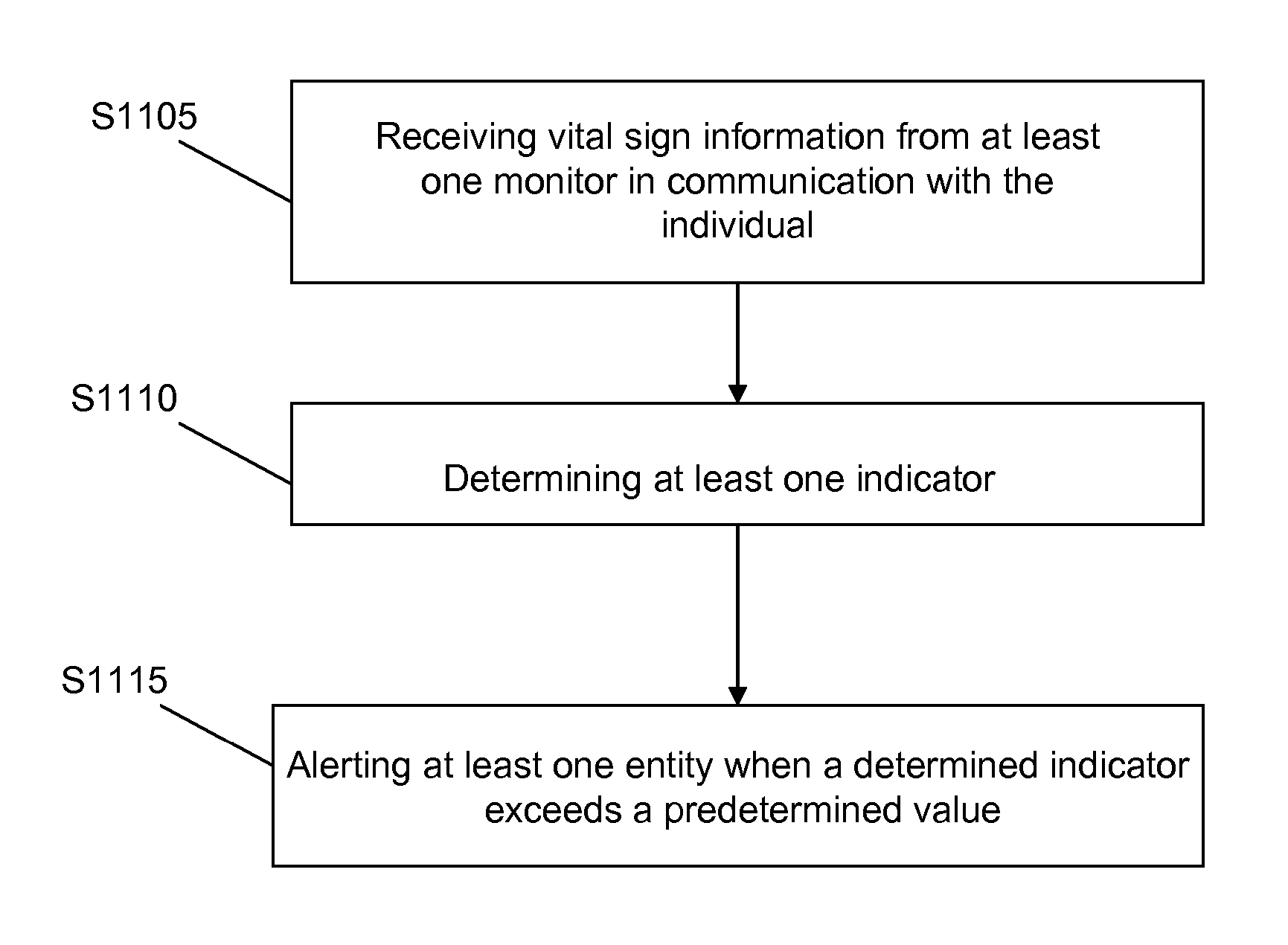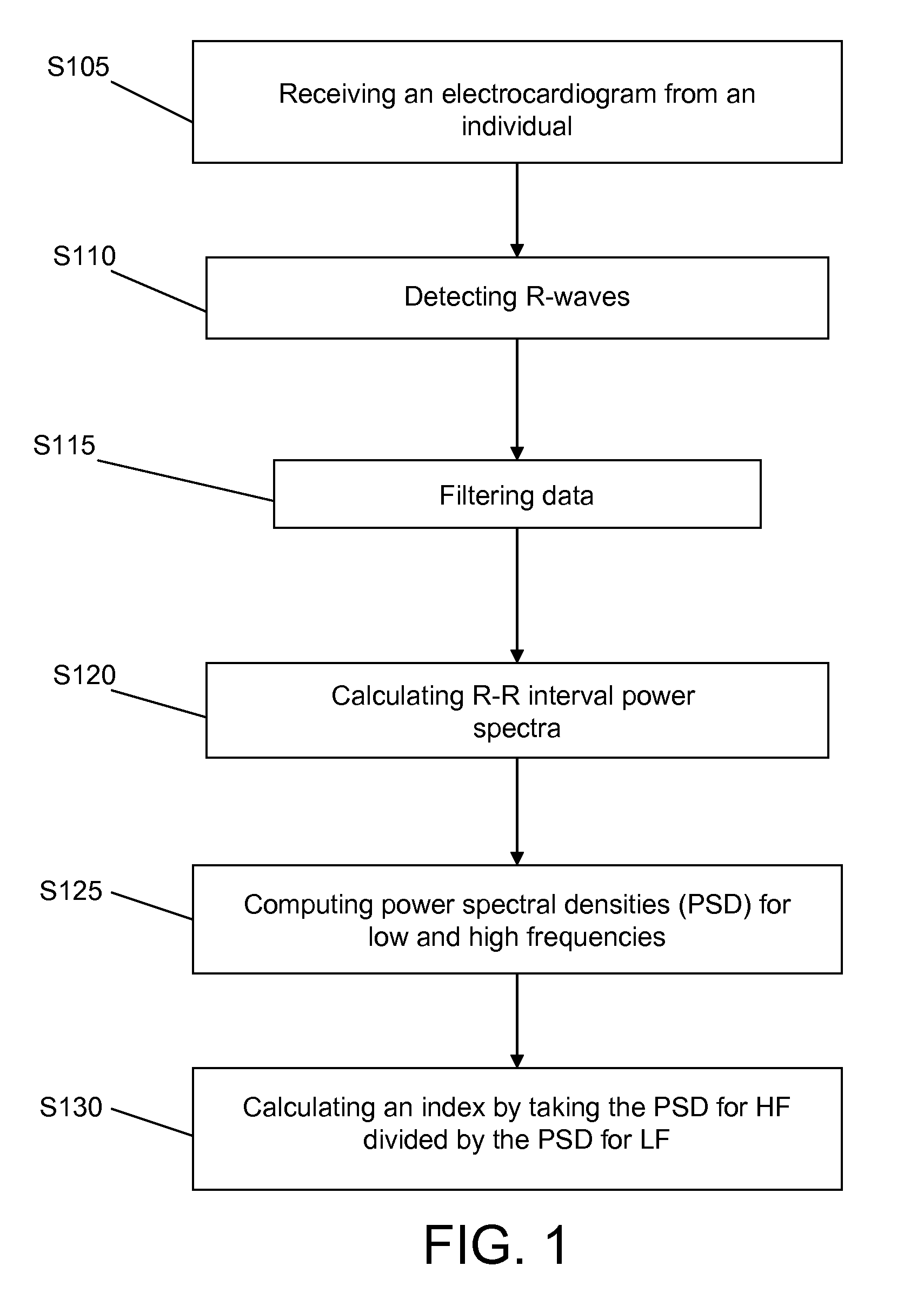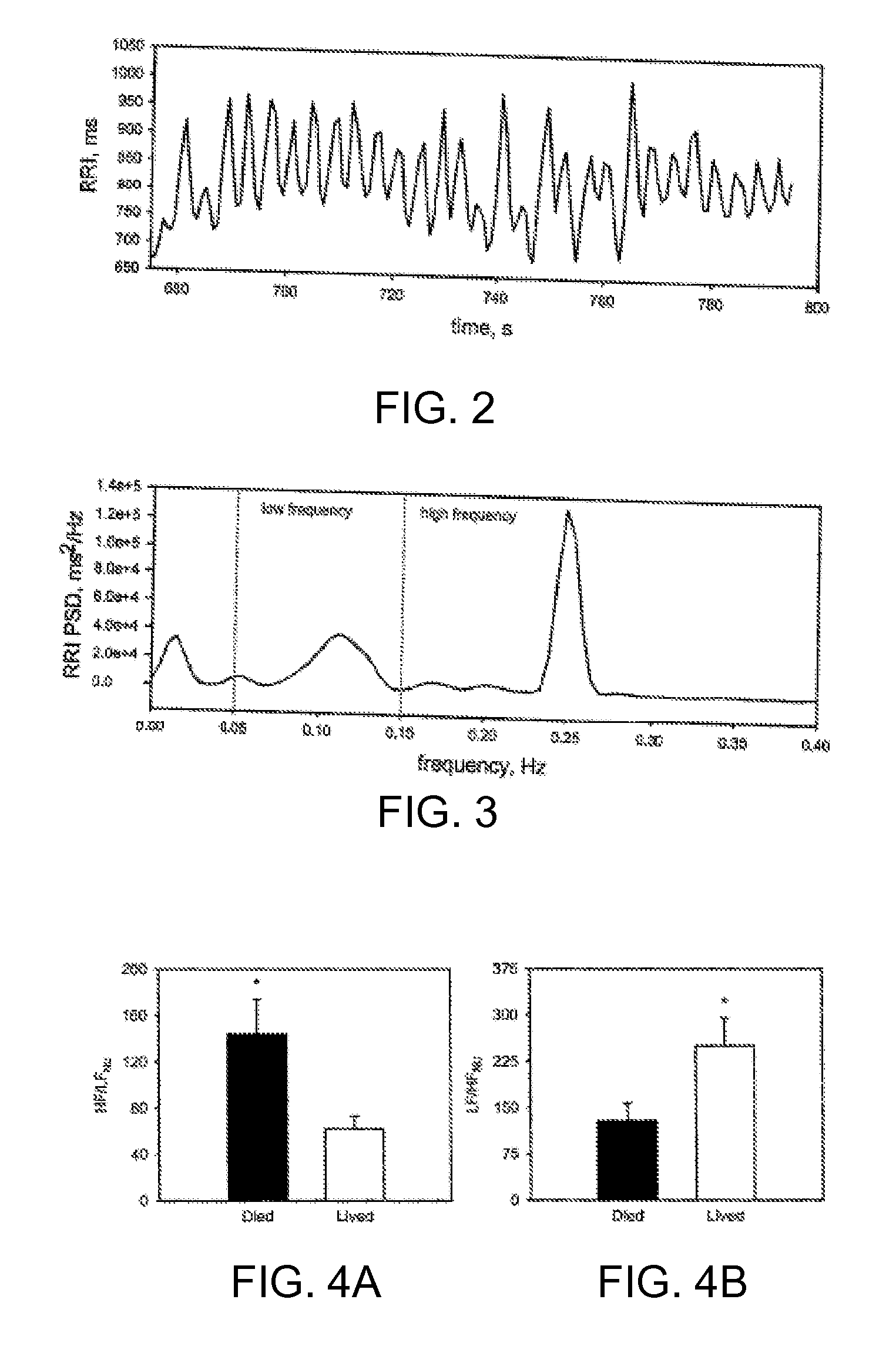Medical Intervention Indicator Methods and Systems
a technology of intervention indicator and medical science, applied in the field of medical intervention indicator methods and systems, can solve the problems of late predictors of poor outcomes, blood loss of patients or soldiers, and blood loss of measures of heart rate and blood pressure, so as to reduce the mortality rate of hemorrhage to between 2% and 4%, and achieve the effect of reducing the number of deaths of patients and soldiers
- Summary
- Abstract
- Description
- Claims
- Application Information
AI Technical Summary
Benefits of technology
Problems solved by technology
Method used
Image
Examples
example 2
[0088] The purpose of this study was to test the hypothesis that an elevated prehospital HF / LF ratio is associated with the need for a life saving intervention (LSI). An analysis of prehospital trauma patient records collected during helicopter transport to a Level 1 Trauma center was conducted. R-waves from two minute segments of ECG waveforms were detected by computer and converted to the frequency domain with a fast Fourier transform. Analysis of variance was performed on three sets of patients, including: 1) survivors with life saving interventions (LSI) (n=36) vs. no LSI (n=36); 2) survivors (n=13) versus non-survivors (n=13) matched by injury severity score (mean ISS=23); and 3) survivors (n=37) versus non-survivors (n=42) irrespective of injury type or treatment. Fourier analysis of pre-hospital ECG collected en route to a level one trauma center was done and an exemplary set of ECG data is illustrated in FIG. 15, which shows the ECG data versus time, R-R interval data versus...
example 3
[0091] The experiment used a lower body negative pressure machine (LBNP) to simulate hemorrhage in humans and had two parts with uncontrolled breathing and controlled breathing. Absolute equivalence between the magnitude of negative pressure applied and the magnitude of actual blood loss cannot at this time be determined, but review of both human and animal data reveal ranges of effective blood loss (or fluid displacement) caused by LBNP. On the basis of the magnitude of central hypovolemia induced, it has previously been proposed that ten to 20 mmHg negative pressure is equivalent to blood loss ranging from 400 to 550 ml; 20 to 40 mmHg negative pressure is equivalent to blood loss ranging from 550 to 1,000 ml; and greater than 40 mmHg negative pressure is equivalent to blood loss approximating 1,000 ml or more.
[0092] For part one of the experiment, subjects underwent an LBNP protocol consisting of a 12 minute baseline period followed by exposure to −15, −30, −45, and −60 mmHg deco...
example 4
[0112] For this study, the mean arterial blood pressure (MAP), pulse pressure, stroke volume, and muscle sympathetic nerve activity (MSNA) in human subjects during progressive lower body negative pressure (LBNP) were measured to test the hypothesis that a reduction in pulse pressure tracks the reduction of stroke volume and change in MSNA during graded central hypovolemia in humans. The method was that after a 12 minute baseline data collection period, 13 men were exposed to LBNP at −15 mmHg for 12 minutes followed by continuous stepwise increments to −30, −45, and −60 mmHg for 12 minutes each. For each 12 minute step, the first 2 minutes were used to allow the subject to reach a steady-state status without data collection. Each subject breathed in time to a metronome set at a pace of 15 breaths per minute, and did not deviate from this controlled breathing frequency during the period of data collection. The stroke volume was measured using thoracic electrical bioimpedence. Muscle s...
PUM
 Login to View More
Login to View More Abstract
Description
Claims
Application Information
 Login to View More
Login to View More - R&D
- Intellectual Property
- Life Sciences
- Materials
- Tech Scout
- Unparalleled Data Quality
- Higher Quality Content
- 60% Fewer Hallucinations
Browse by: Latest US Patents, China's latest patents, Technical Efficacy Thesaurus, Application Domain, Technology Topic, Popular Technical Reports.
© 2025 PatSnap. All rights reserved.Legal|Privacy policy|Modern Slavery Act Transparency Statement|Sitemap|About US| Contact US: help@patsnap.com



